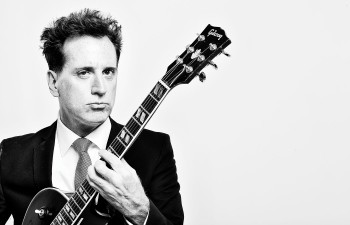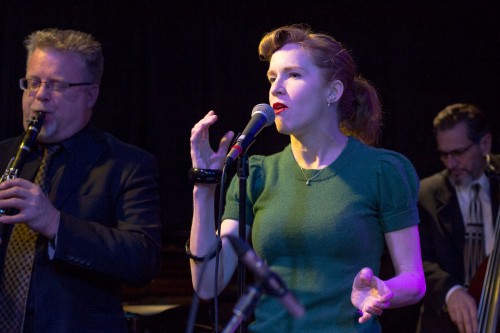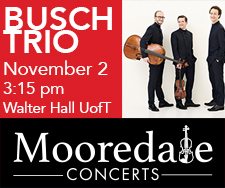Later on, we’ll conspire
As we dream by the fire
To face unafraid
The plans that we’ve made
Walking in a winter wonderland
Winter Wonderland, Felix Bernard/Richard B. Smith. 1934.
“Christmas starts on November 1;” so goes the knowing refrain, spoken in tones of world-weary authority to those affronted by the instant shift from Halloween to Christmas in retail displays, both digital and physical. Those who repeat this defeatist bromide are not necessarily less affected by the sudden onslaught of candy canes and evergreens, of reindeer and elves, of living in a dystopian paternalistic surveillance state ruled by the Clauses. No, they are simply stating the obvious: that the secular advertorial spectacle of Christmas constitutes an overwhelming, inescapable part of our experience of the season, even in households for which the holiday holds a primarily religious significance.
It is inevitable, in many ways, that this is the case. Christmas has a lengthy and complicated history, with the central conflict playing out between the holiday’s status as a solemn religious event, as a site of feast and drunken revelry, or as some combination thereof. This was the case in the 17th century, when Christmas was briefly banned, the Puritans having never really taken to drunken revelry. It is still the case today, to some extent, though the holiday’s Christian significance is largely outweighed by its secular rituals. In the commercial imagination, Christmas is nothing if not a feast: a celebration of plenty, an opportunity for sharing, for generosity, for giving gifts. It is, for better or worse, a holiday centred on consumption. That so much Christmas iconography – Christmas trees in living rooms, holly wreaths decorating doors, mistletoe hung slyly in conspicuous locations – tends to consist of bits of nature snipped and transplanted indoors is no mistake. Christmas, as a celebration of plenty, of the results of the harvest, tends to work better in urban environments, in which people are cut off from the labour that produces the goods to be consumed. It is no mistake that Charles Dickens’ A Christmas Carol, one of the foundational texts of our current conception of Christmas, takes place in London, in the mid-19th century, at a time in which the material resources of half the world flowed to the Empire’s hegemonic centre.
And yet, to return to the lyrics quoted at the beginning of this article, it is precisely the late-capitalist commodification of every facet of our waking lives, of which the commercialization of Christmas is but a symptom, that produces one of the holiday’s most enduringly appealing charms: the realization of a period of mutually agreed-upon respite from the work week, from emails, from the burden of productivity. Not for all, and not for very long, but the prospect remains one of Christmas’ central myths: to “dream by the fire” with a loved one is to return, however briefly, to the carefree days of youth, to enjoy a holiday from the outside world, to finally, at the end of the calendar year, have some time – a few days, a week, maybe, between December 24 and January 2 – to focus on ourselves, to be present, to enjoy the company of an intimate few. This is the promise of so much secular holiday music: chestnuts roast on an open fire as we enjoy the play of being exposed to the elements from the comfort of a comfortable middle-class home. We have ourselves a merry little Christmas and imagine that our troubles are miles away, out of sight; we come home for Christmas, if only in our dreams. The core component of any secular Christmas celebration, we are told, is a collective, wistful imagination of Christmas.
Christmas music plays a key part in the yearning for contentment that fuels our holiday daydreams, but its ubiquity, from November 1 onwards, can corrupt its intended effect. In the hands of retailers eager to drive the holiday sales that have become essential to their survival, Christmas music becomes one of the tools with which nostalgia is weaponized as a sales tactic. Come mid-December, at the time when the holidays are actually in sight, we’ve spent six weeks of mental energy fending it all off: Mariah Carey at the grocery store, Michael Bublé in the mall, the insipid, twee, ukulele-and-sleigh-bell chime of every YouTube advertisement for poorly made clothing. To be consistently bombarded by Christmas music in so many areas of our lives is to be forced to inoculate ourselves to these songs’ nostalgic effects, and to the genuine joy that they are capable of producing in the appropriate doses (if a listener is inclined to find joy in such music). Participation in the very capitalist structures that make the secular experience of a collective Christmas break so necessary also ruins one of the holiday’s chief joys: the experience of nostalgia through music, and the precious comfort that nostalgia is capable of providing.
There is, however, something to be done, if you find yourself yearning to yearn again, to recapture the joy of music that seems to have been rubbed clean of the lustre it once possessed: go listen to some musicians play Christmas music, and listen to how the songs you know are transformed, revivified, re-presented in ways that break the cynical purgatorial cycle of streaming-platform playlists, emerging, finally, alive again. Some holiday gigs are good, some bad. But in the fortuitous times when they are very good, they deliver on the basic promise of secular Christmas music: to daydream, to create the sensation of presence, to provide the listener with an opportunity to indulge in the imagination of their own history. Ultimately, the nostalgic core of this music is more involved than simply thinking fondly on the past: it is about taking a moment to reflect on our previous experiences, so that we might more happily celebrate the present moment, and move confidently forward, facing, unafraid, the plans that we’ve made for the future. This may not be true, of course. But it’s nice to think that it could be.
MAINLY CLUBS, MOSTLY JAZZ QUICK PICKS
DEC 11, 8:30PM: Jazzcast n’ Joy, Hugh’s Room. Drew Jurecka, Alex Pangman, Jeremy Ledbetter, and more, play at Hugh’s Room for Jazzcast’s December extravaganza.
DEC 15, 4PM: The Woodhouse featuring Barbra Lica. The Jazz Room. The Woodhouse, an instrumental collective that has been playing holiday shows for over ten years, brings Juno-nominated singer, Barbra Lica, to Waterloo for an afternoon show of Christmas classics.
 DEC 21, 8PM: Dave Barrett, Hirut Cafe. Dave Barrett plays solo guitar arrangements of holiday favourites in the intimate setting of Hirut Cafe.
DEC 21, 8PM: Dave Barrett, Hirut Cafe. Dave Barrett plays solo guitar arrangements of holiday favourites in the intimate setting of Hirut Cafe.
DEC 21, 9PM: Robi Botos and Hilario Duran, Jazz Bistro. Now an annual event, two of Toronto’s leading jazz pianists play Christmas music, jazz standards, and music that reflects each player’s unique roots.
Colin Story is a jazz guitarist, writer and teacher based in Toronto. He can be reached at www.colinstory.com, on Instagram and on Twitter.




